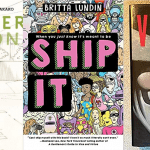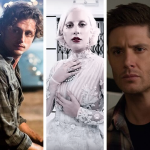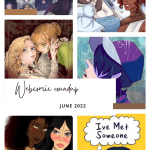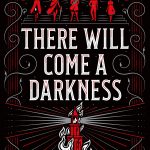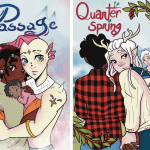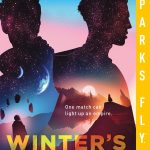The Personal Quest: An Interview With Aria Morgan Howell, Author of “The Light In Front of Me”
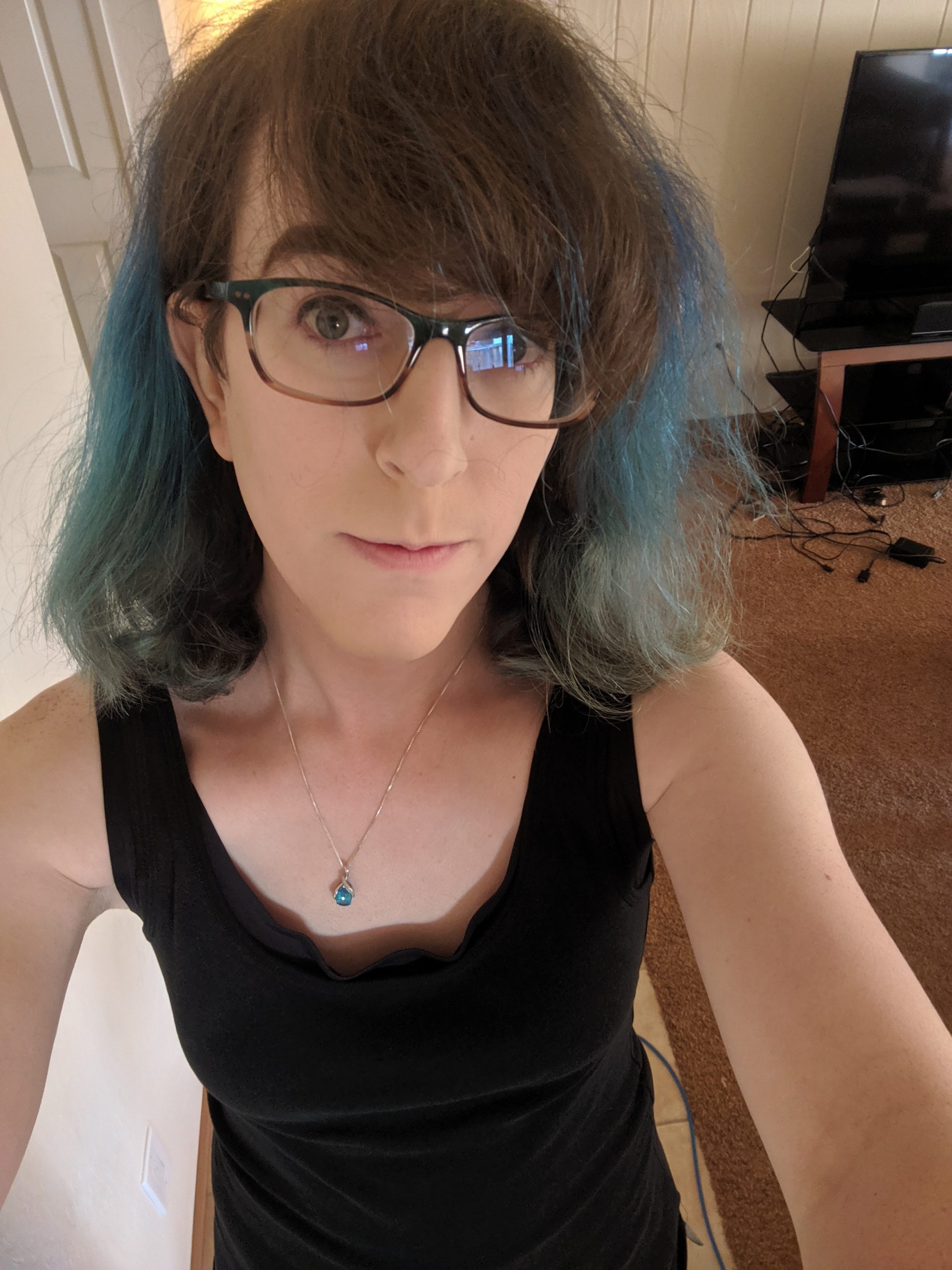
Aria Morgan Howell, author of the high fantasy novella The Light In Front of Me, offers insight into the inspiration and creative process behind her writing and visual novel game design.
The Light In Front of Me takes the common fantasy quest narrative to a personal level. Princess Valerie’s mission to save her fiance Prince Eliot becomes a personal journey. She doesn’t just confront the villain; she challenges herself along the way. Aria Morgan Howell (website) has taken the time to discuss the making of her novella and its visual novel version. Photos of her cats are included (you’re welcome).
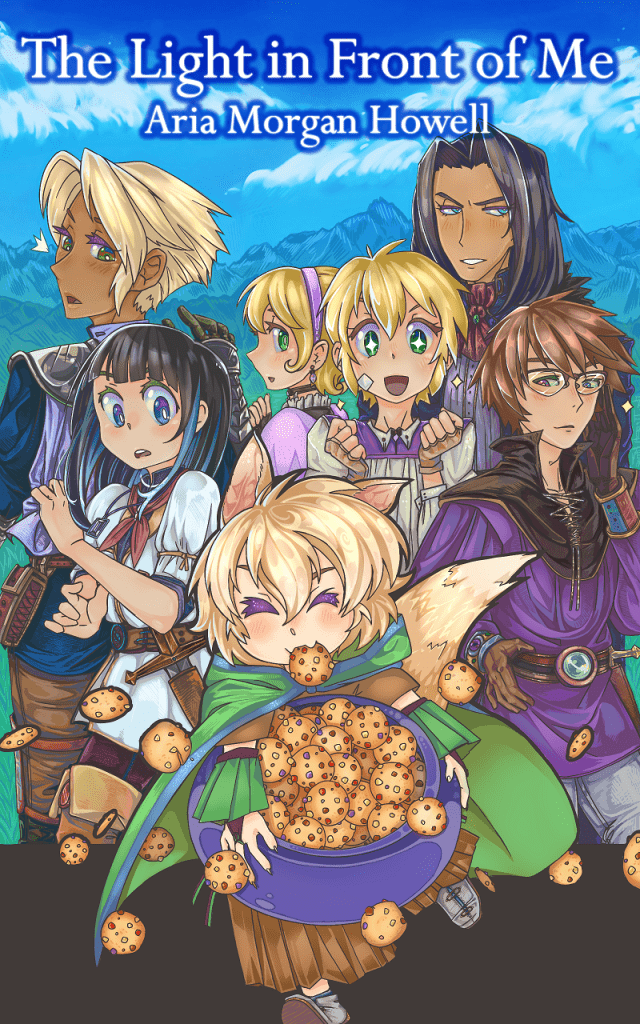
The Geekiary: Great to have you here! Let’s start by introducing yourself!
Aria Morgan Howell: Thanks for having me! My name is Aria, and I’m a trans woman who writes LGBT-friendly fiction and translates terrible Japanese video games for fun. A lot of my writing tends to have a lot of comedic or comfy scenes that I feel are important moments we don’t experience in stories as much as we should. There’s plenty of swords and magic to keep things going, of course. A lot of my inspirations are visual mediums like anime or video games, so I’ve been told that my writing tends to be a bit on the descriptive side at times.
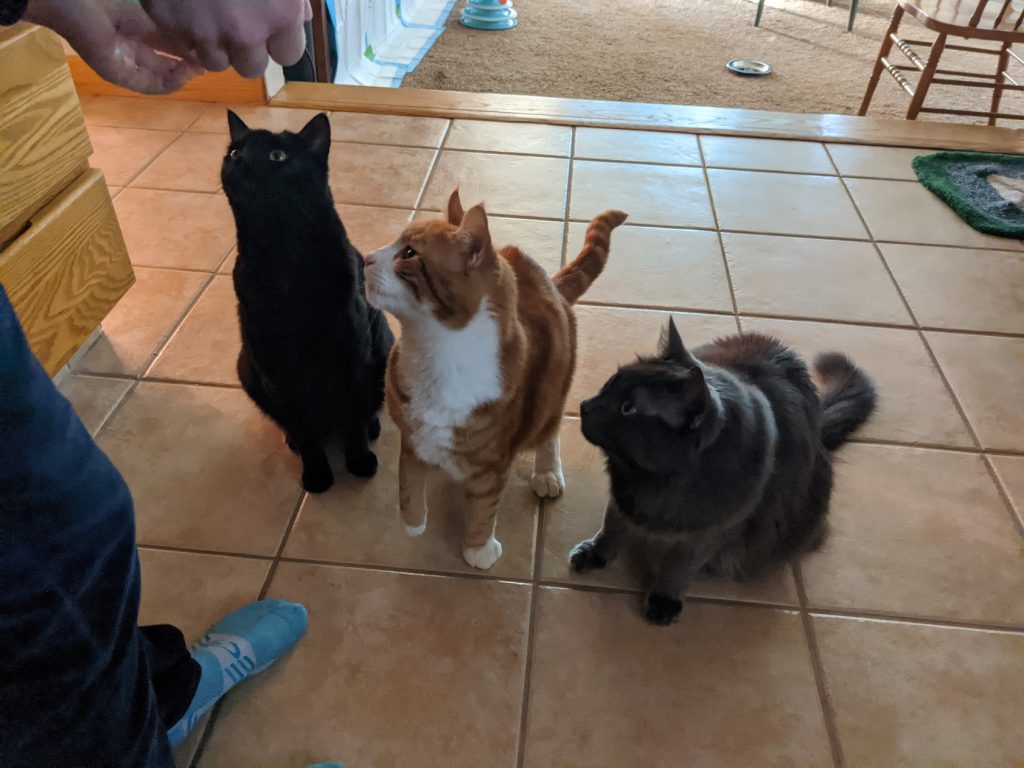
TG: What I loved about your novella The Light In Front of Me is that it takes the fantasy quest narrative in unexpected directions. Princess Valerie sets off to rescue Prince Eliot after he’s kidnapped by a sorceress. Valerie’s guard, Luce, joins her, and soon new and familiar friends are part of the journey. But then the story becomes so much more than that. Each character has their own personal journey, whether it’s figuring out your gender identity or what’s best for your future. I’m curious to know when or how the novella began for you.
Howell: Oddly enough, the idea for the story came from watching the RiffTrax comedy group poke fun at a pretty rough fantasy movie named Krull with a young Liam Neeson. As the evil villain tempts the kidnapped princess with power she denies, I wondered how a prince would react in that setting. I felt like a prince in a humiliating position would be quicker to accept power to help himself without waiting for a princess to save him. That’s how the story first began to grow; a princess rescuing a kidnapped prince tempted by power.
At the time, I had also started practicing kendo, which is essentially Japanese fencing with bamboo swords. Sword fighting has always fascinated me, and while kendo wasn’t a good match for me in the end, I learned a lot while I was there that I was able to apply to hopefully make the action scenes feel more realistic. So that’s why there are lots of swords at least, haha.
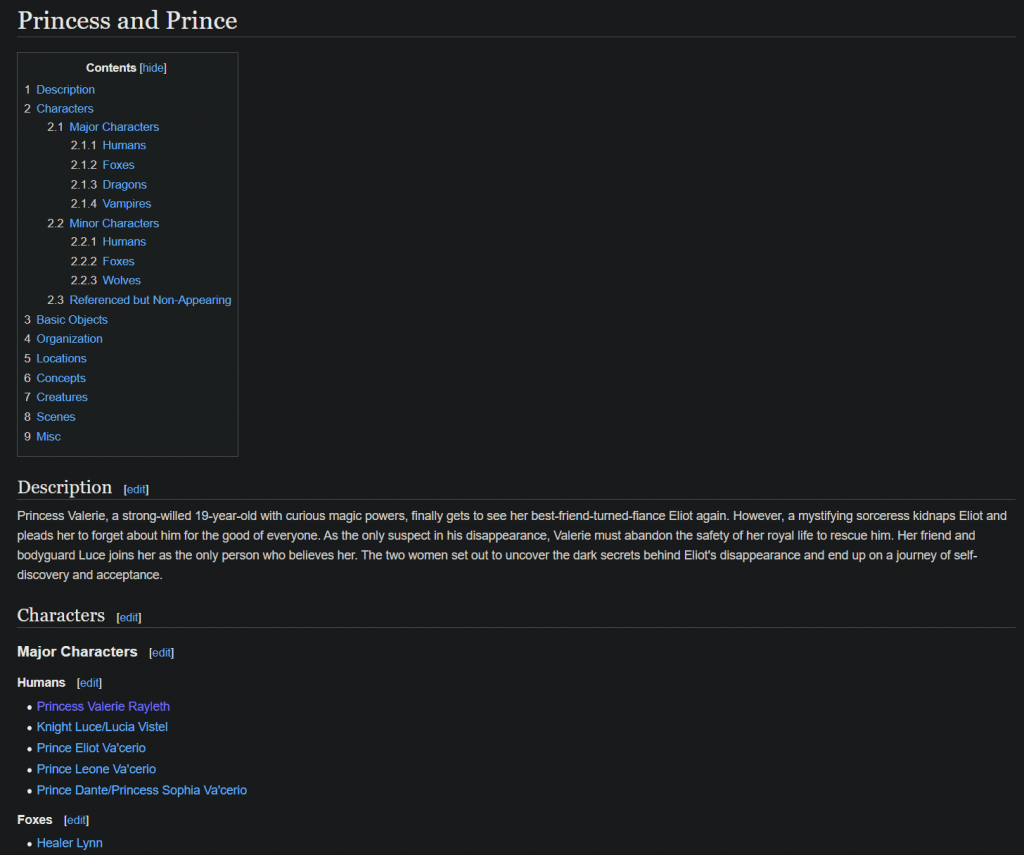
As for the villain, I really dislike when a story has a villain that’s evil for the sake of being evil. It’s disappointing when a villain is just like “I was born with a desire for evil. Even killers tremble before me,” blah blah. So I wanted to make sure my villain had a really good reason for kidnapping the Prince of Va’cerio. Really exploring that humanized her a lot more than I expected. With the key event in the past of her mistake and what kidnapping Eliot would do for her, that created the major structure for the story that I was able to start piecing together.
TG: The Light In Front of Me features a Queer normative world. Lyn is nonbinary and another character realizes she’s transgender, and yet their realizations or reveals are normalized. For me, it’s refreshing to see secondary worldbuilding that does not include queerphobia. Coming out is celebrated. Has this story taking place in a Queer normative world been there from the start, or have there been changes along the way?
Howell: After coming out as trans myself, I wanted to include Queer elements in my stories since I’d rarely seen them in other media. Maybe I would have come out sooner if characters I experienced growing up had similar situations. Maybe I could help someone else out if they experienced my characters.
The form that would take in my story wasn’t set in stone, though. Initially, one party member was going to come back to their village where they were either kicked out or deadnamed constantly, using their journey as a means to escape. But, I felt that was too sad and didn’t bring out the message that coming out and accepting yourself is a thing to be celebrated. That character was scrapped, but became the basis for Lyn, who runs away from home since they’re too afraid to talk with their family about who they are. As for the character Lyn helps push to come out as trans, that part was pretty impulsive.
Originally, I wanted that character to come out as gay by meeting someone at the ball who gave them a push. I thought that making them trans like myself would be too much of a self-insert and feel really forced, but as I wrote the scene and began describing the ballroom, I knew that’s not how the character felt, and that I had to follow my heart. Since I wrote that part without much planning, both that character’s confession and their new partner’s response were heavily stream of consciousness, and I feel that helped make it feel more genuine. It became one of my favorite parts of the book, enough that I expanded it out into a stand-alone visual novel with music and artwork to help bring it to life. You can find that visual novel for free on itch.io here.
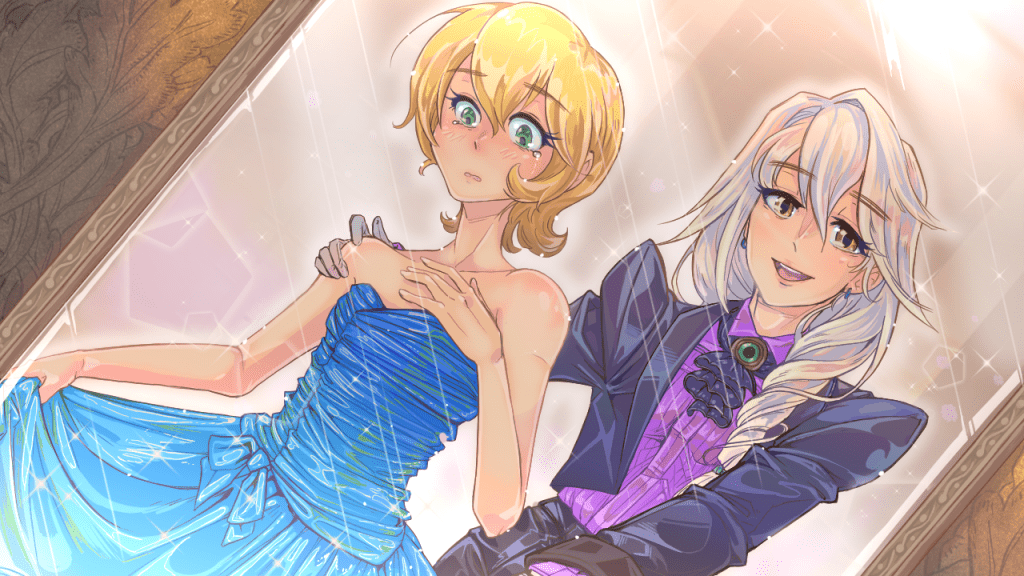
As for Valerie’s relationship, I wanted a story where love was the only thing that mattered. Many stories with Queer elements have strife or conflict with Queer relationships, asking if it’s okay for two women to be together or having them fight against themselves or their family for the right to be together. It’s what we experience in real life. But I wanted my readers to be in a world where we are past that, a world where if two people loved each other, that was that. It may seem like a minor worldbuilding detail, but it’s something we could one day have, and it’s worth dreaming of.
TG: Are you working on anything new at the moment?
Howell: I’ve mostly been working on game translations over the past year or so, but I do want to start another story once the large project I’m working on is wrapped up! I have an original story planned out that blends fantasy with the modern world a bit, but I’m not ready to share too much on that one yet.
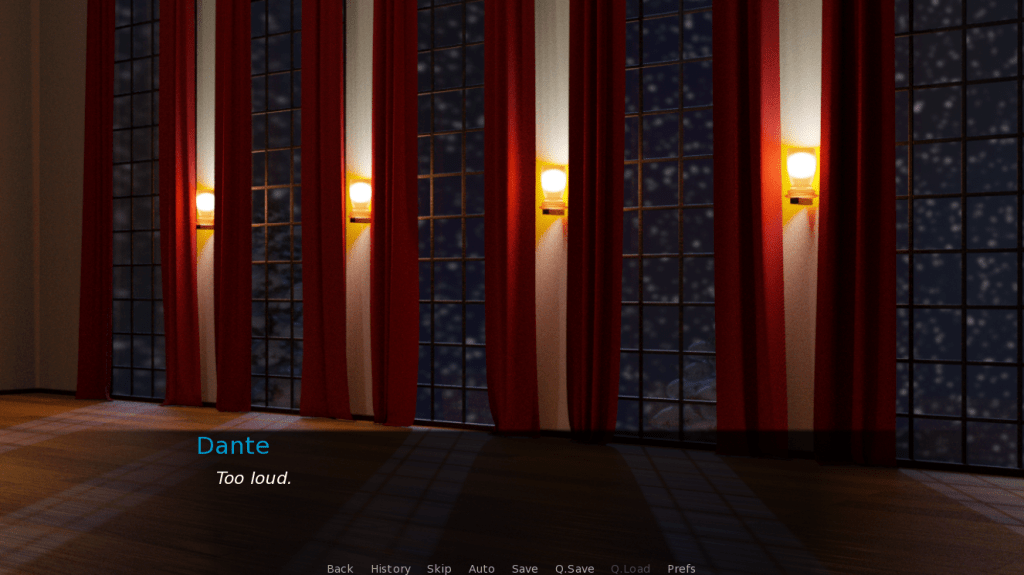
On the other hand, I was joking with a friend about fanfic ideas for practice, and they jokingly recommended I mix the characters from The Light in Front of Me with the Lovecraft horror Playstation 1 game from 1998 I’m currently translating called “…iru!” which is roughly translated as “…they’re here!” In that game, the students are staying late at their school on an island to prepare for a festival when they’re locked in the building and hunted down as sacrifices to summon an Elder God. The crossover idea would go way more comedic, with the characters being pulled into a magical book and having to figure out how to return to their world. Lyn would be a villain partially, thinking the Necronomicon was the Om nom nom-icon that would summon infinite baked goods. Other characters may be led to temptation and help summon the creature, Morgan and Sophia would have some opportunities to grow closer, and maybe a new character or two?
This started as a joke, but once we realized it would have to be called The Shadow Behind Me as a direct contrast to The Light in Front of Me, it started to feel more like a real project haha. I’m not sure it’ll be as long as The Light in Front of Me, though who knows, maybe it’ll spiral out of control [laughs].

TG: Do you have any advice or pointers for Queer writers and creatives?
Howell: I tried writing my first novel more than a decade ago when I was in high school and only got to around chapter 4 of that story. I feel the biggest issue I had back then was that I didn’t know my own characters as well as I do for this book.
I mentioned this a bit earlier, but not only knowing how your character acts, but also *why* your character grew to be like that is important. Why are they arrogant, why are they self-sacrificing, why do they have problems trusting others, etc. I knew my characters well enough for this story that for many of the scenes, I just stuck them in the room then wrote out the conversations they had in my head. I’m not big on detailed character sheets; I mostly have the usual physical details, then a goal, history, and a bullet point list of personality traits, often with a “but” to keep things from being all good.
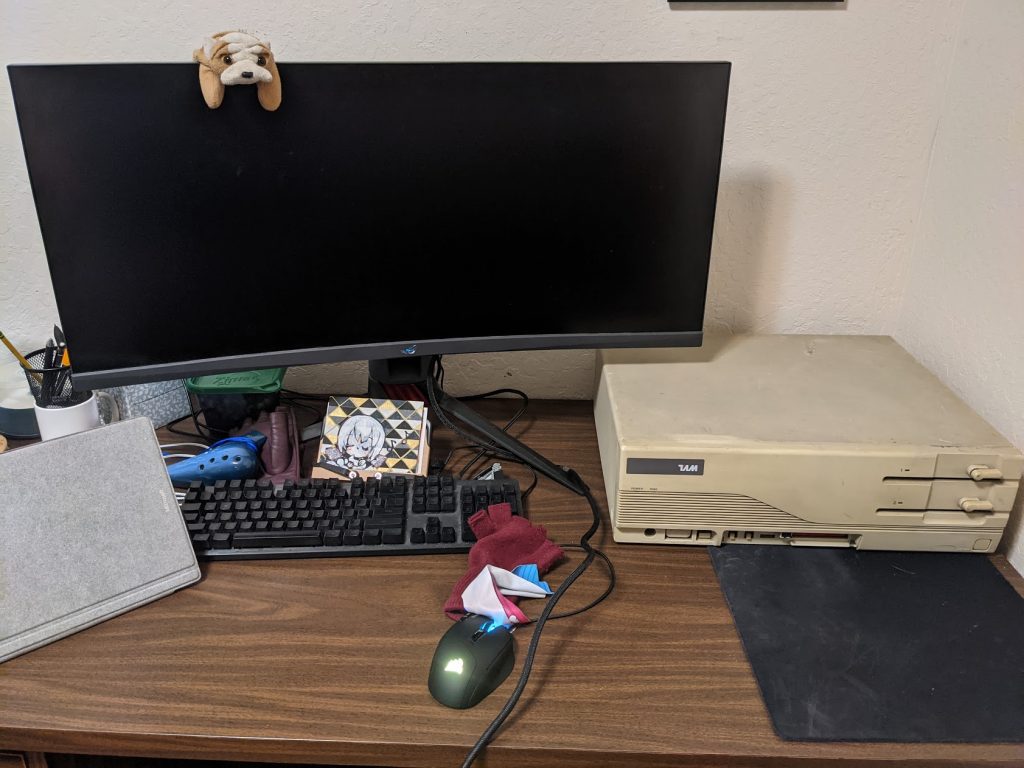
For example, Valerie has “Strong-willed, brave, but is overconfident and doesn’t have a sense of danger due to sheltered upbringing.” Flaws are very key, we all have them. I’m sure it’s common writing advice, but flaws are often more interesting than strengths. Sometimes flaws are character development opportunities that are worked on in the plot, such as Valerie’s overconfidence or Leone’s trust issues.
As for puzzling out the plot, I follow a similar 20 questions approach. I start out with the events I know already, such as the beginning and any major events I want to happen, such as Valerie reaching the sorceress and attempting to rescue Eliot. How do I want Valerie to feel at the time? If she should be less overconfident, then I should have an event that knocks her down a peg. How do they reach the sorceress on top of the mountain? She can’t be easy to reach, so they need some form of help to get there. How do they find that? What would it even be? How is Eliot handling this, should he be near a breaking point or more confident? etc etc. The plot and all ideas generally won’t just appear in your head; even if some ideas do, you’ll have to sit down and connect the larger dots.
If you’re stumped on what should happen in one area, work on the details of another. An event in one area might set up something for that stuck area or give you more ideas. Keep bouncing around between the outline and character details until things come nicely together. Planning style isn’t a one-size-fits-all approach, so this is just what I do. But once I have this connected outline and character details, I can start the first draft. The outline doesn’t have to be that lock-in either, things change. It doesn’t have to be super long either. The entire novel outline for my book was only about 2.4k words, with some scenes way more detailed than others. For me, I enjoy making it up as I go as long as I have the guiding threads to steer the plot. Whew, I rambled here [laughs]. One last thing, take advantage of things that motivate you! I used NaNoWriMo to jump-start my novel and really get myself writing.
Don’t feel like you need to “win” NaNoWriMo or anything though; It took me just over 2 months while really pushing myself and it hit around 70k words in the end. Next time, I’ll take things a tad slower for fewer migraines, but I feared if I let the momentum drop, I’d never get it back. That ended up being a mental hurdle that was simply not true. I’ll still sometimes feel that “I can’t write” or “it was all a fluke,” but then if I sit down, I can write just fine. Sometimes you just gotta ignore yourself. Okay, I swear I’m done rambling this time!!
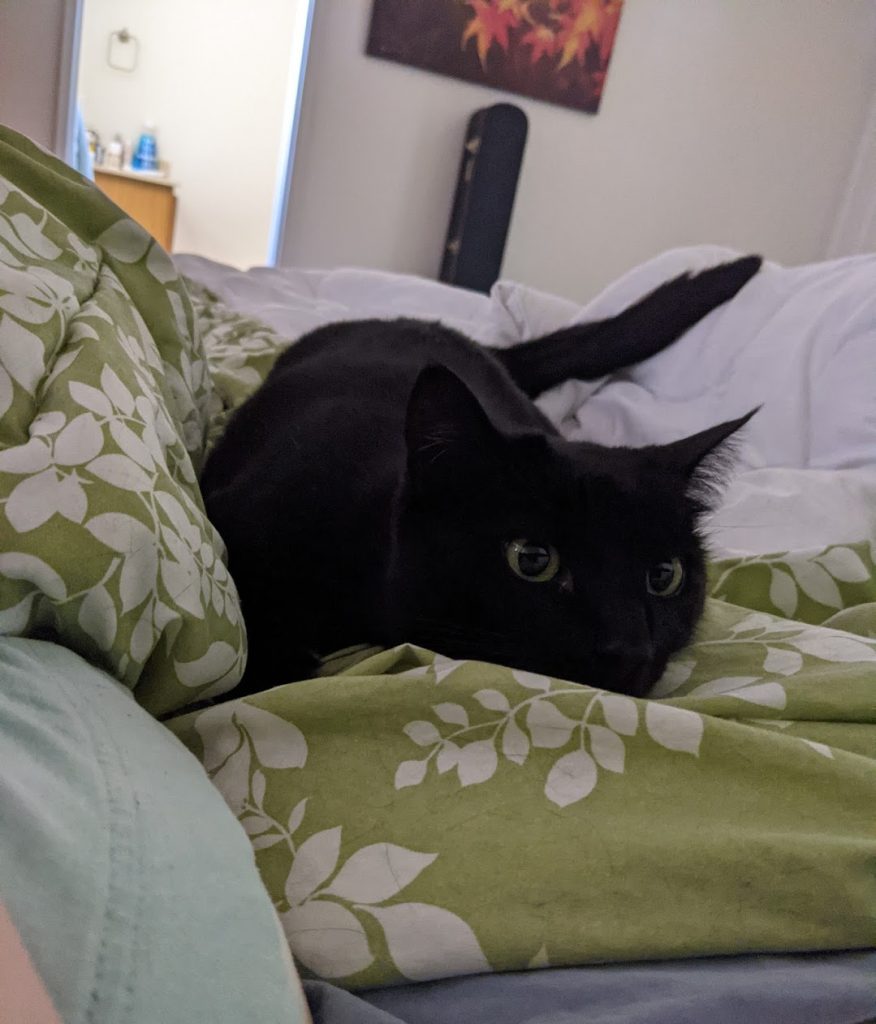
The Light In Front of Me is available to buy (pay what you can) on Itch.
Media that Aria Morgan Howell Recommends:
fault – milestone (Visual Novel, Alice in Dissonance)
The Player of Games (Novel, Iain Banks)
Fate/Stay Night (Visual Novel, Kinoko Nasu)
Sleepy Princess in the Demon Castle (Manga, Kagiji Kumanomata)
Crystar (Video Game, Gemdrops)
Bokura no Kiseki (Manga, Kumeta Natsuo)
Silent Hill 2 (Video Game, Konami)
Mage & Demon Queen (Webtoons comic, Kuru (Color_LES))
Author: Bradda M.
Bradda M. currently lives in Virginia. He teaches ESOL (English to Speakers of Other Languages) at a public school and spends his free time reading and watching movies each night with his partner. For The Geekiary, he writes about webcomics and SFF media.
Help support independent journalism. Subscribe to our Patreon.
Copyright © The Geekiary
Do not copy our content in whole to other websites. If you are reading this anywhere besides TheGeekiary.com, it has been stolen.Read our

